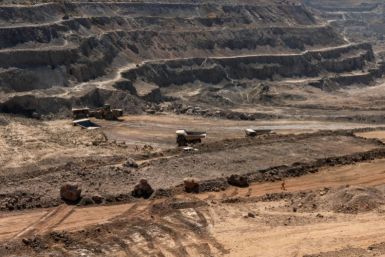Australia: Inflation Up, As Expected
Headline inflation was a bit stronger than expected in the March quarter, but that won't force the Reserve Bank's hand at its May meeting next Tuesday.
In fact the outcome yesterday, while larger than forecast, followed the script laid out by the central bank and many business economists and industry figures: the floods, cyclone and higher petrol prices, plus some higher power prices, were the driving forces boosting the cost of living.
So no surprises and as explained yesterday, the Reserve Bank has already told the market it will note, but not take too much notice of the March quarter CPI (or the trade and growth figures for the quarter as well).
But the June quarter inflation data, which will include big increases in electricity and other charges, could force a re-rating, or perhaps a hardening of the bank's rhetoric if allied with a continuation of the strong jobs growth seen in March over the next three months.
The headline rise in the CPI was 1.6% for the three months to March, against the 0.4% rise in the December quarter and a market expectation of 1.2%.
It was the biggest quarterly rise since 2006, when Cyclone Larry boosted food costs in the same way as Cyclone Yasi did from the end of January.
That left the year to rate at 3.3%, just above the 3% top of the RBA range, but that won't worry the central bank.
The news caused the silly duffers in the foreign exchange market to push the value of the Australian dollar up by around a third to a new all time post float high of 108.41 USc. It then pulled back.
The report from the Australian Bureau of Statistics showed a small rise in the Reserve Bank's own measures of underlying inflation. The quarterly average of the two measures, the trimmed mean and weighted median, rose 0.85% in the March quarter from 0.65% in the December quarter.
In the year to March, the average of the measure remained at 2.25% - well within the 2%-3% range.
The ABS said the most significant price rises this quarter were for automotive fuel (+8.8%), vegetables (+16.0%), deposit and loan facilities (+4.6%), fruit (+14.5%) and pharmaceuticals (+12.5%).
And the most significant offsetting price falls were for furniture (-6.2%), audio, visual and computing equipment (-7.2%), milk (-6.2%), overseas holiday travel and accommodation (-1.6%) and motor vehicles (-0.5%).
"Fruit prices increased by 14.5% in the March quarter 2011 mainly due to an increase of approximately 100% in the price of bananas during the March quarter 2011 due to shortages following floods and Cyclone Yasi," the ABS said.
"Vegetable prices increased by 16.0% in the March quarter 2011, driven by price rises in cauliflowers, broccoli, lettuce, pumpkin and potatoes due to damage to crops as well as the usual seasonal price rises."
Across the capital cities, the ABS said the biggest rise was in Melbourne (+1.7%) followed by Sydney (+1.6%) and Adelaide (+1.6%). The remaining four cities increased between 1.1% and 1.5%.
"The food group was the most significant positive contributor in all cities with the exception of Melbourne, Adelaide, and Hobart, where the most significant positive contributor was the housing group mainly due to electricity price increases in those cities.
"The largest increases for the food group were recorded in Canberra (+3.5%), Brisbane (+3.4%), and Sydney (+3.0%) driven by increases in vegetable and fruit prices.
"At the eight capital cities level, the transportation group was the second largest positive contributor to the quarterly movement showing increases in all cities.
"The most significant contributor was the increase in automotive fuel in all capital cities, most notably in Perth (+9.8%) and Sydney (+8.9%).
"The household contents and services group was the largest negative contributor to the quarterly movement at the eight capital cities level.
"The largest decreases for the household contents and services group were recorded in Perth (-1.9%), Sydney (-1.6%) and Melbourne (-1.6%). Darwin (+0.6%) was the only city to record an increase in the March quarter 2011.
"Over the twelve months to the March quarter 2011, the All groups CPI rose in all capital cities.
"The largest positive movement was recorded in Brisbane (+3.6%) and Adelaide (+3.6%) due to relatively higher increases in alcohol and tobacco and housing respectively.
"Perth (+2.6%) recorded the smallest positive movement mainly due to relatively smaller rises in food, alcohol and tobacco and housing," the ABS said.






